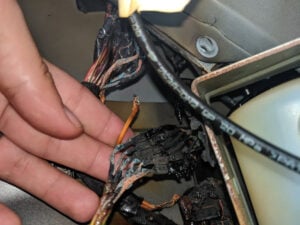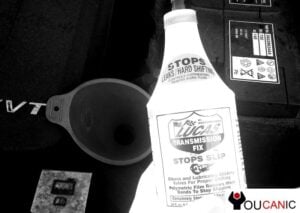Car Won’t Start – Common Causes
Let’s look at common problems that won’t allow your car to start. A vehicle usually doesn’t start because of a weak battery or loose battery terminal connections. If your car turns on but all you hear is a click or light dimming, try jump-starting your vehicle first.
1. Weak Battery
The first thing you should check is the battery. Even if the car ignition turns on, the battery voltage should be at least 12.5 volts.
Many auto parts stores perform free battery and alternator tests. If you can get your car to start, take it to a store near you to get it tested free of charge.
2. Loose Battery Terminal
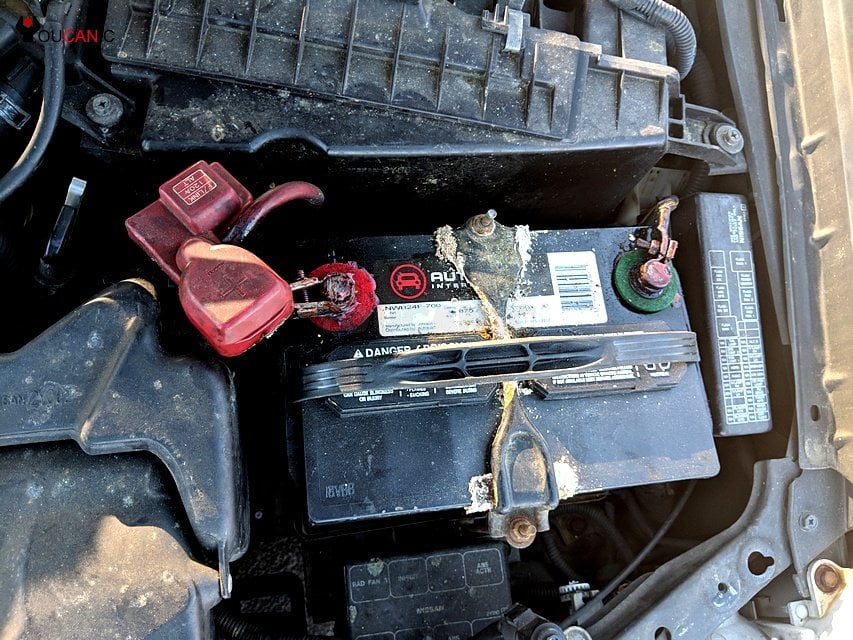
Before condemning a faulty starter, check the condition of the battery cable and battery terminals.
A corroded cable and battery terminal would deliver less voltage to the starter, causing a clicking noise, which means insufficient battery power.
The following video shows how to clean battery terminals and post using a Battery Terminal Brush.
3. Engine Seized
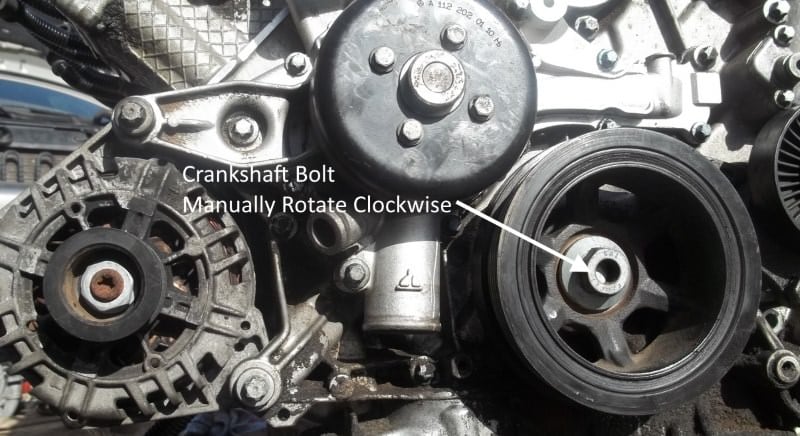
If your engine overheated, you may have blown a head gasket or, even worse, seized the engine.
You can manually turn the crankshaft to check if the engine is seized (locked). Especially if the car overhead or oil light was on while driving, start by turning the engine over by hand at the crankshaft pulley.
This way, you can verify a possible seized engine. If you cannot turn the engine over, the engine may throw a rod, or the main bearing can become loose. In addition, when an engine is seized, the starter will have a hard time turning the engine over; therefore, a grinding noise can be heard, and the starter will eventually become hot.
4. Defective Ignition Switch

First, let’s test the ignition switch. Try to start your vehicle, and if the starter is making some noise, the ignition switch is delivering power to the starter. At this point, the ignition does not need to be replaced.
One of the quickest ways to test for a good ignition switch and wire is to test it at the starter. The starter has a ( +) terminal. Use a voltmeter and connect the negative side of the voltmeter to the vehicle’s ground.
This can be on the frame, a bolt, an engine bay, a transmission, etc. Next, take the positive side of the voltmeter and probe the (+) terminal. Have someone turn the key over. If power is reaching to the (+) terminal, then the ignition switch is working properly.
5. Blown Fuses
Let’s begin with the starter fuse since it is the easiest to check. Locate the starter fuse. The starter fuse is usually located around the engine bay in the fuse box; it can also be located underneath the steering wheel and sometimes behind the passenger side panel. Use a fuse puller and remove the fuse. Check the fuse and make sure it is not blown.
6. Faulty Relay
Another issue that can prevent a car from starting is a faulty relay for a critical component. There are four terminals on a starter relay. Two terminals are for power, and the other is for the load side.
On a typical starter, terminal numbers 86 and 85 are for the power side. And the load side is numbers 87 and 30. Give the power to numbers 86 and 85. You should be able to hear a clicking noise. Next, use a multimeter and set it to the ohm setting. Connect the power side and negative side of the multimeter to numbers 87 and 30. There should be continuity, and reading should be zero. If there is no reading, the relay is faulty.
7. Bad Starter
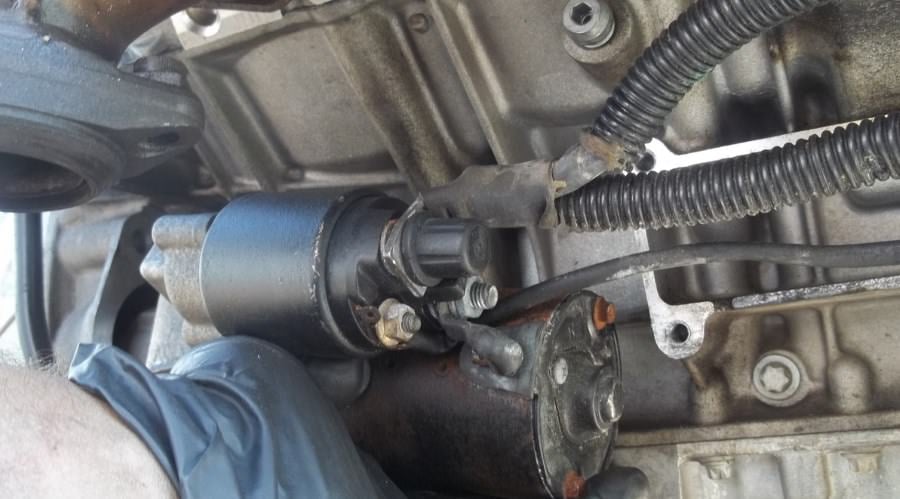
Use a battery jumper and connect the negative side to the starter’s body. Connect the positive side of the jumper to the (b) terminal.
Next, use a jumper wire or a screwdriver and touch the (b) terminal to the (s) terminal. This should give power to the starter. If the starter motor fails to move, then the starter is faulty.
Troubleshooting Using YOUCANIC Full System Scanner
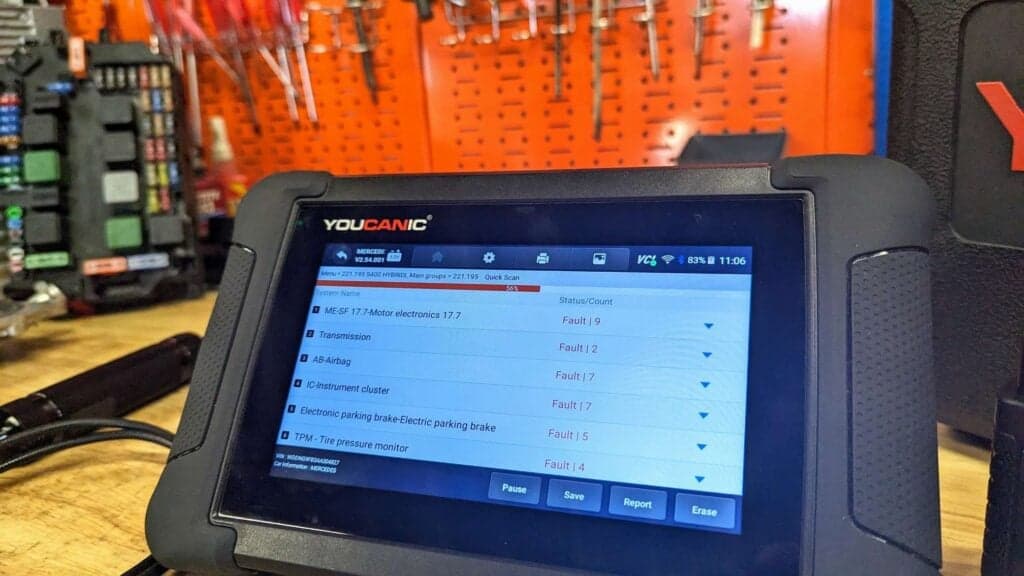
The YOUCANIC Full System Scanner can easily read and clear fault codes in all the systems in your vehicle. It can also display data lists from all the sensors that can help you determine the cause of the problem.
We hope you find the Car Won’t Start – Common Causes guide helpful. Check these troubleshooting and repair guides for more help on your vehicle.






